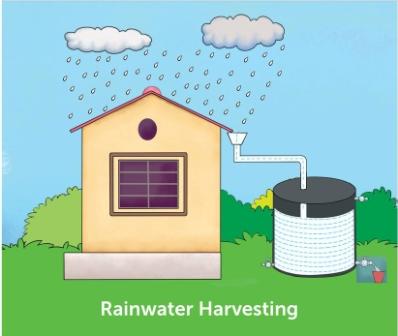Bhubaneswar: Taking a cue from other states, the Odisha government had brought a rainwater harvesting scheme in 2014. Five financial years later, the implementation cannot exactly be dubbed ‘impressive’. When it comes to setting an example, more needs to be done on part of the government.
To begin with, the state government has failed significantly in installing sufficient Rooftop Rainwater Harvesting Systems (RRHS) in its own premises. The scheme has been implemented mostly in private buildings as compared to government buildings.
According to a statistical figure given by the department of water resources, only 352 government buildings have been successfully provided with the RRHS until March this year. The government has also failed to achieve its target of covering 550 government buildings and 16,405 private buildings over the span of five years.
Prakash Kumar Nanda, Director of Ground Water Development, says that they have implemented the scheme in as many buildings as possible in the allocated budget.
“We could not put up RRHS in a lot of government buildings as they are old and have Tar-Felt terraces. It’s not suitable for rainwater harvesting, as we may end up collecting impure water,” Nanda said.
The scheme is presently executed in 11 urban local bodies.
While the government buildings in Bhubaneswar and Berhampur have seen major implementations, cities like Sambalpur, Rourkela and Cuttack have RRHS in less than 10 buildings. It is to be noted that the scheme was extended to these three cities in FY 2018-19, alongside Puri, Angul and Talcher.
There are not many takers for the scheme among common people as only 9,438 private structures have RRHS throughout the state. In fact, in the initial year of implementation, no private buildings were equipped with RRHS despite the government providing technical and financial incentives up to Rs 45,000 to the building owners.
But Nanda is fairly confident that in just another year the government will be able to achieve the target. “We have to convince and pursue people to install rain water harvesting systems in their houses. So, we kick-started the initiative with government buildings. There were misconceptions among people that by implementing the scheme, they would be left with stagnant water on their rooftops. We have also proposed to extend the scheme by another five years and to expand it to 14 other urban local bodies as well,” Nanda added.
One of the objectives of the government was to replenish the receding ground water level in the state. But environmentalists have sounded caution that ground water tables are depleting, especially in the state capital.
“Rainwater harvesting scheme is implemented in a lateral manner in urban places. There is absolutely no monitoring by the authorities concerned. Increasing concrete jungles and lack of open spaces in the cities are also not helping the cause,” says Jaya Krushna Panigrahi, an environmentalist.
According to Orissa Environmental Society (OES) President SN Patro, the government has not done enough over the span of five years. “If the buildings have Tar-Felt terraces, the government can sure replace the layer. It is not a very expensive or time consuming task. Five years is a lot of time to be able to do it as well,” says Patro. He also doesn’t estimate the number of government buildings in the Capital city to be less than 10,000.
So far, only 131 government buildings in Bhubaneswar have RRHS.
Of the Rs 100 crore that was invested for the scheme, only 46% of the budget has been utilized so far. In this year’s budget, Rs 24.79 crore have been allocated for this purpose, with a target to construct RRHS in 5,500 private buildings and 65 government buildings. The budget allocation is paltry when compared to other flagship schemes like Krushak Assistance for Livelihood and Income Augmentation (KALIA) or Biju Swasthya Kalyan Yojana (BSKY), for instance.
One of the major complaints among environmentalists is that the government has failed to adequately promote the valuable scheme.
The Director of Ground Water Development emphasised that they are trying to pursue the cause with all seriousness. “We are trying to spread awareness by putting up ads, hoardings and carrying out road shows for a more effective implementation of the scheme,” Nanda said.
Patro disagrees. “Hoardings are not enough. The government should carry out mass awareness campaigns through local welfare associations. The government should create enough impact so that it trickles down to the grass root levels, where there isn’t enough awareness about the subject. Public should also mount pressure on the government to attract its attention to the very important issue,” says the environmentalist.
